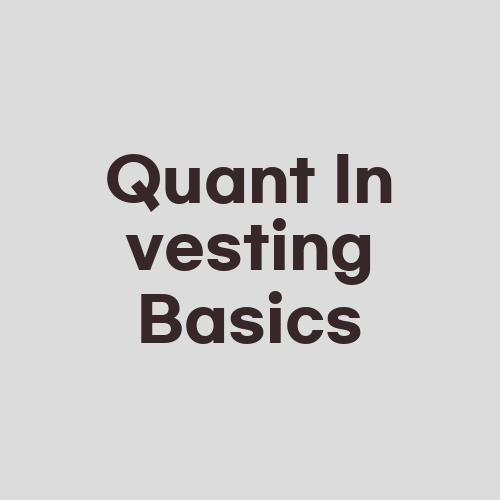Quant Investing Basics

Quant Investing Basics: A Guide for Aspiring Quantitative Analysts
Introduction
Quantitative investing is a field that involves utilizing mathematical and statistical models to analyze investment opportunities. As an aspiring quantitative analyst, it’s important to have a solid understanding of the basics of this field. This article will cover the key concepts and tools that you need to know in order to be successful in the world of quant investing.
What is Quantitative Investing?
Quantitative investing is a strategy that involves using mathematical models to analyze financial data in order to identify investment opportunities. This approach is based on the belief that financial markets are not completely efficient and that it’s possible to identify patterns that can be used to generate returns.
Quantitative investors typically use a combination of financial theory, mathematics, and computer programming to build and test models that will help them identify attractive investment opportunities. These models can be used to analyze a variety of financial instruments, including stocks, bonds, commodities, and derivatives.
The Quantitative Analysis Process
The quantitative analysis process involves a number of key steps, including data collection, model building, backtesting, and implementation. During the data collection phase, quantitative analysts gather financial and economic data from a variety of sources, such as stock prices, economic indicators, and news articles.
Once the data has been collected, analysts use statistical and mathematical techniques to build models that will help them identify patterns and relationships in the data. These models are then tested using backtesting, which involves running the model on past data to see how it would have performed in real-world conditions.
Finally, if the model performs well during backtesting, it can be implemented to identify investment opportunities and make trading decisions.
Key Concepts in Quantitative Investing
There are several key concepts that are important to understand in the world of quantitative investing. These include:
– Risk management: Quantitative investors must be skilled at managing risk in their portfolios. This involves using techniques such as diversification and hedging to reduce the impact of market fluctuations on overall portfolio performance.
– Factor investing: Factor investing involves identifying factors that are likely to drive stock returns, such as valuation, momentum, and quality.
– Algorithmic trading: Quantitative investors often use algorithms to make trading decisions. These algorithms are typically based on mathematical models and can be used to execute trades automatically.
Common Tools Used in Quantitative Analysis
There are several tools that quantitative analysts use to build and test models. These include:
– Programming languages: Quantitative analysts typically use programming languages such as Python or R to build and test their models.
– Statistical software: Statistical software like Matlab or SAS can be used to analyze and manipulate large datasets.
– Data sources: Quantitative analysts rely on a variety of data sources to gather information. These include financial databases, economic indicators, and news sources.
Frequently Asked Questions
What is the Difference Between Quantitative and Qualitative Investing?
Qualitative investing involves making investment decisions based on subjective factors, such as company management, industry trends, and social factors. Quantitative investing, on the other hand, is based solely on objective data and statistical models.
What Are the Key Skills Needed to Be a Successful Quantitative Analyst?
Successful quantitative analysts typically have strong skills in mathematics, statistics, and computer programming. They must also be adept at working with large datasets and analyzing complex financial models.
What Are Some of the Risks of Quantitative Investing?
Like any investment strategy, quantitative investing comes with risks. One of the biggest risks is that the models that are used to make investment decisions may not perform as expected. Additionally, the use of leverage and other complex financial instruments can increase the risk of losses.
Conclusion
Quantitative investing is a complex and challenging field that requires a strong foundation in mathematics, statistics, and computer programming. By understanding the key concepts and tools of this field, you can position yourself for a successful career as a quantitative analyst. Good luck!
Useful site:
Quant Investor – A community of quantitative investors, traders, and quants that offers educational resources, trading tools, and a forum for discussing strategies and ideas.